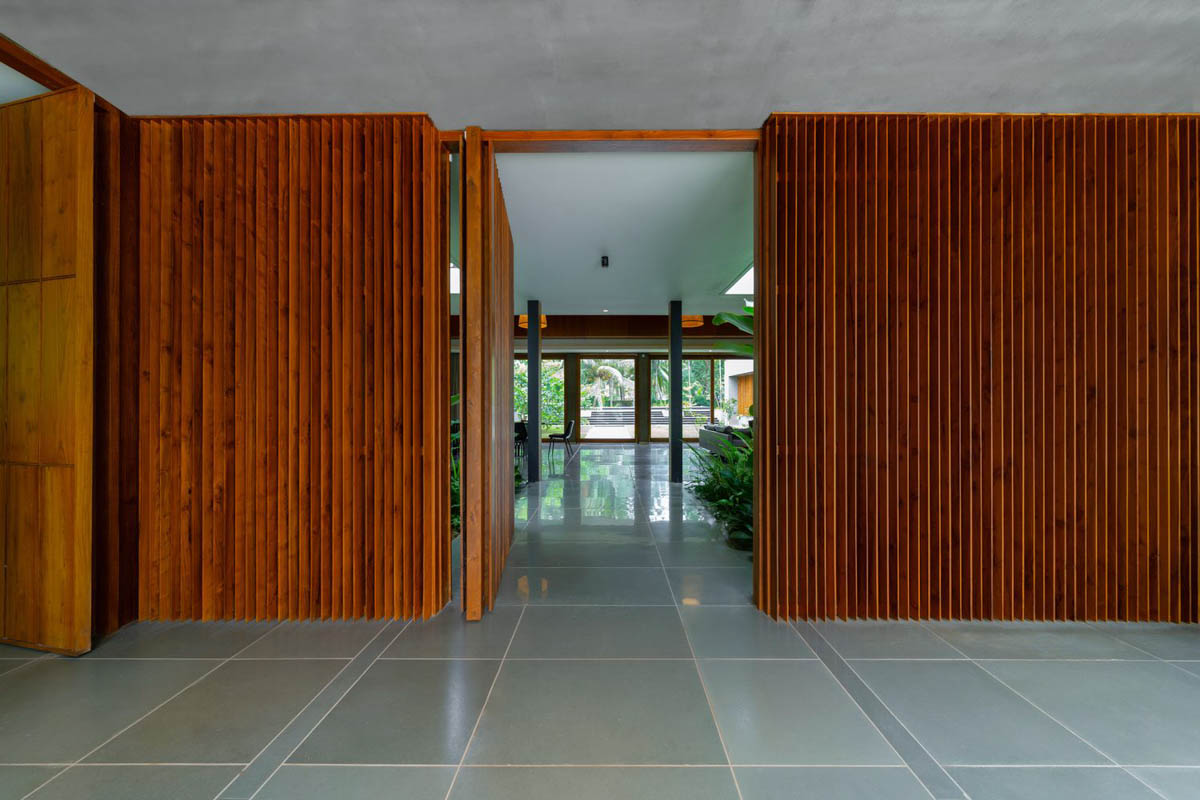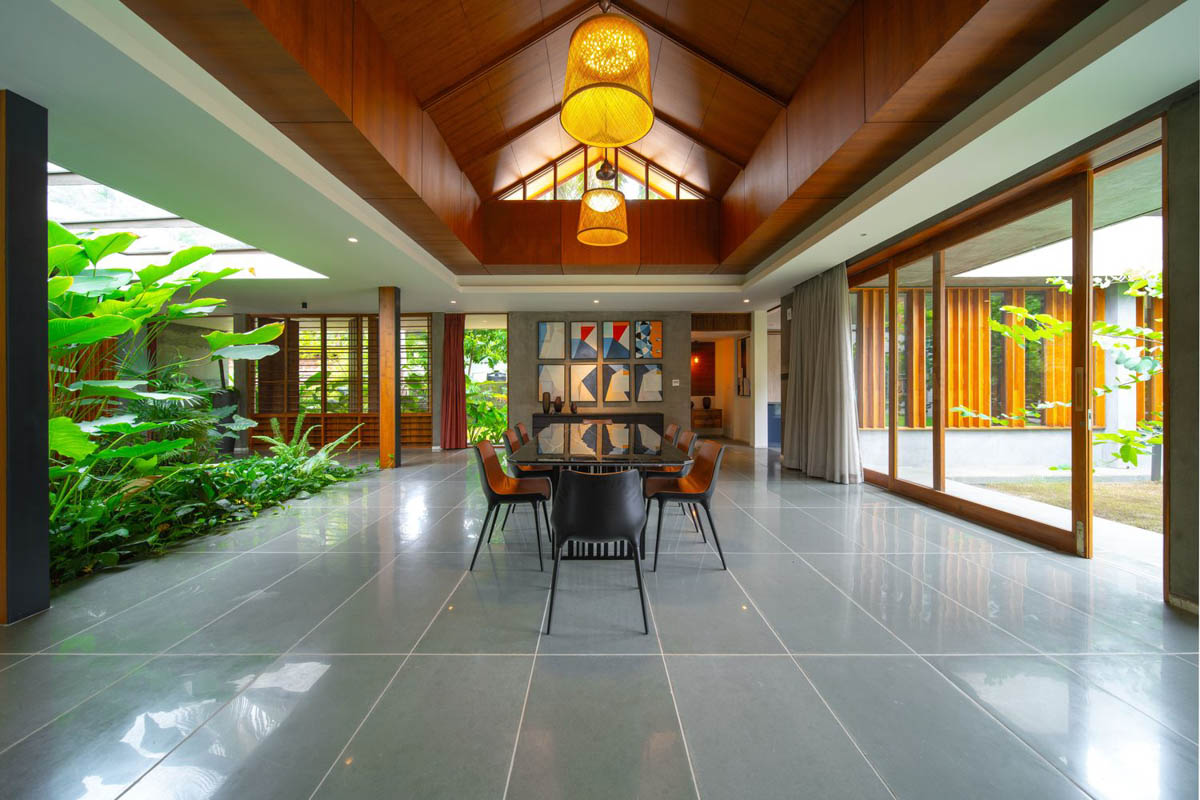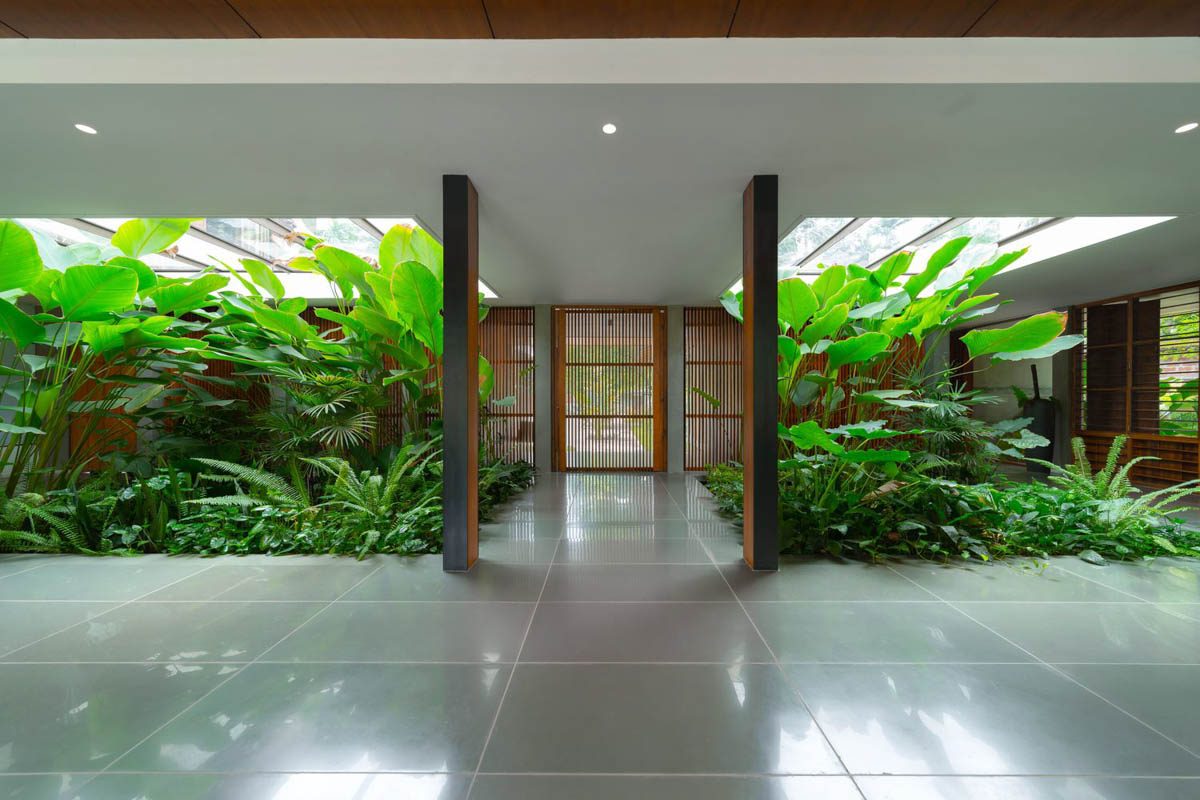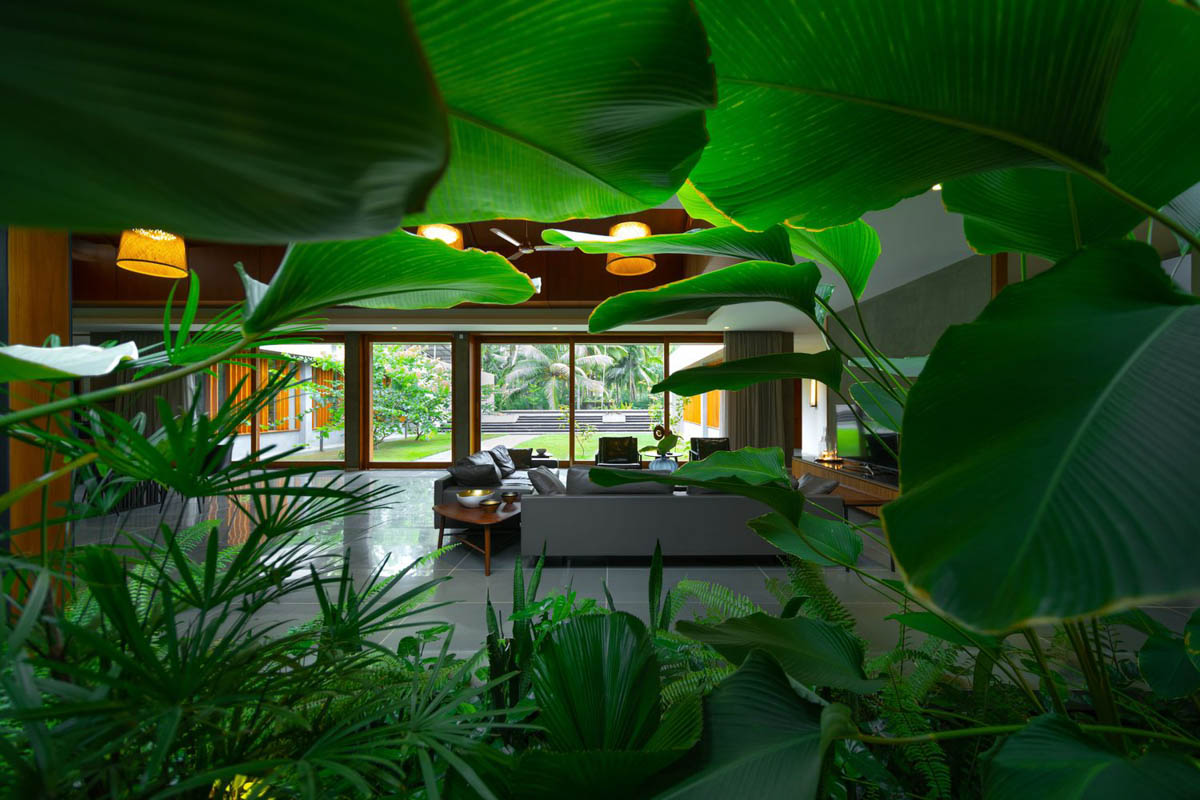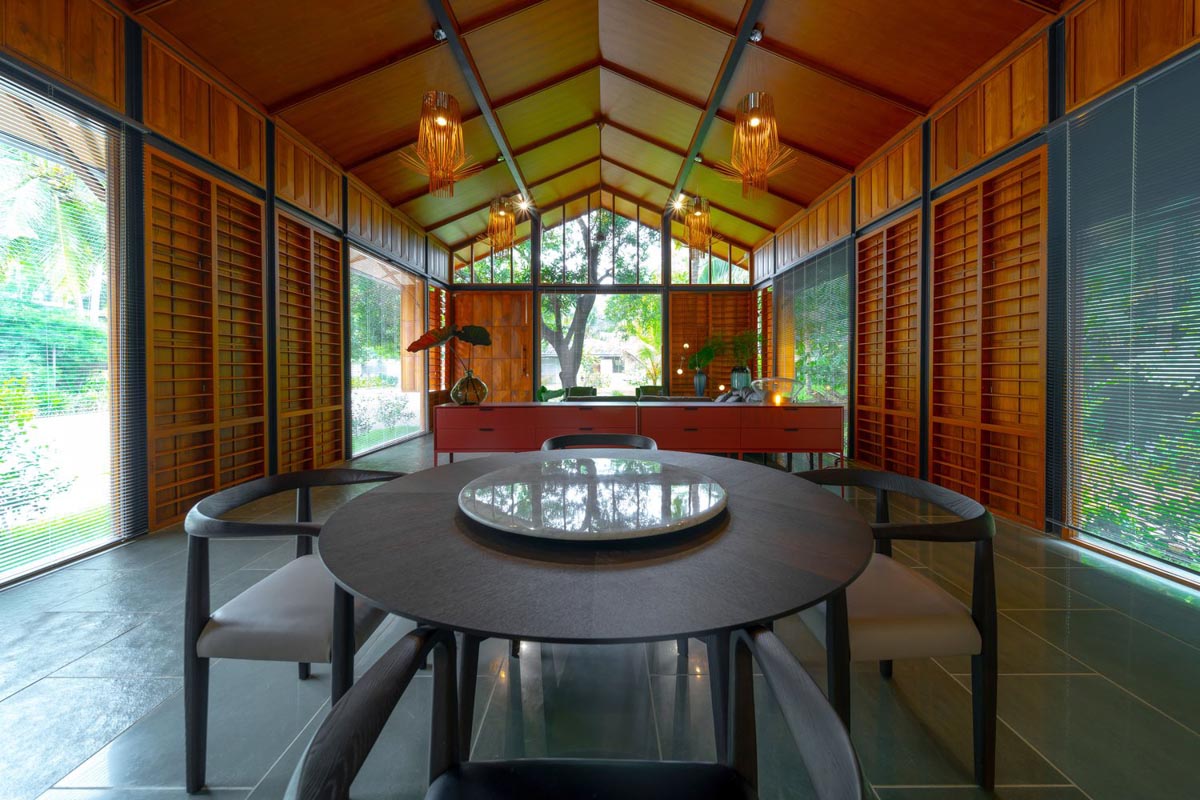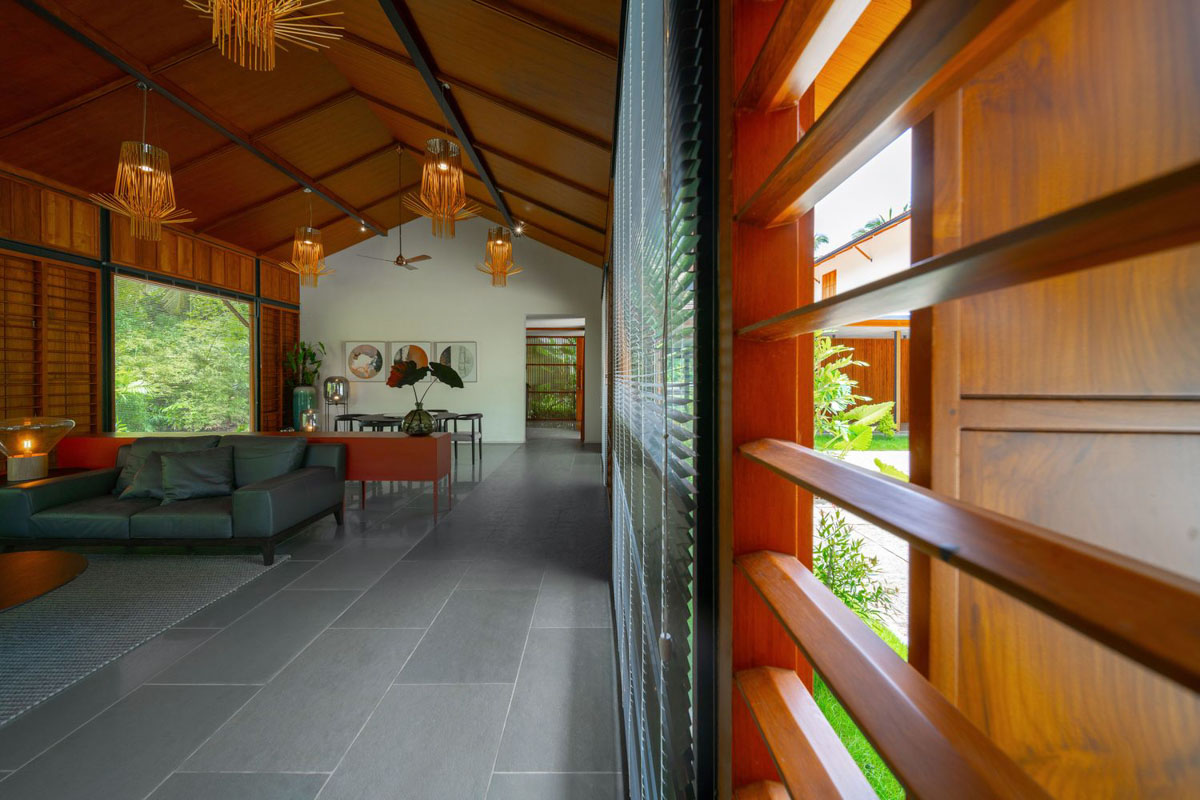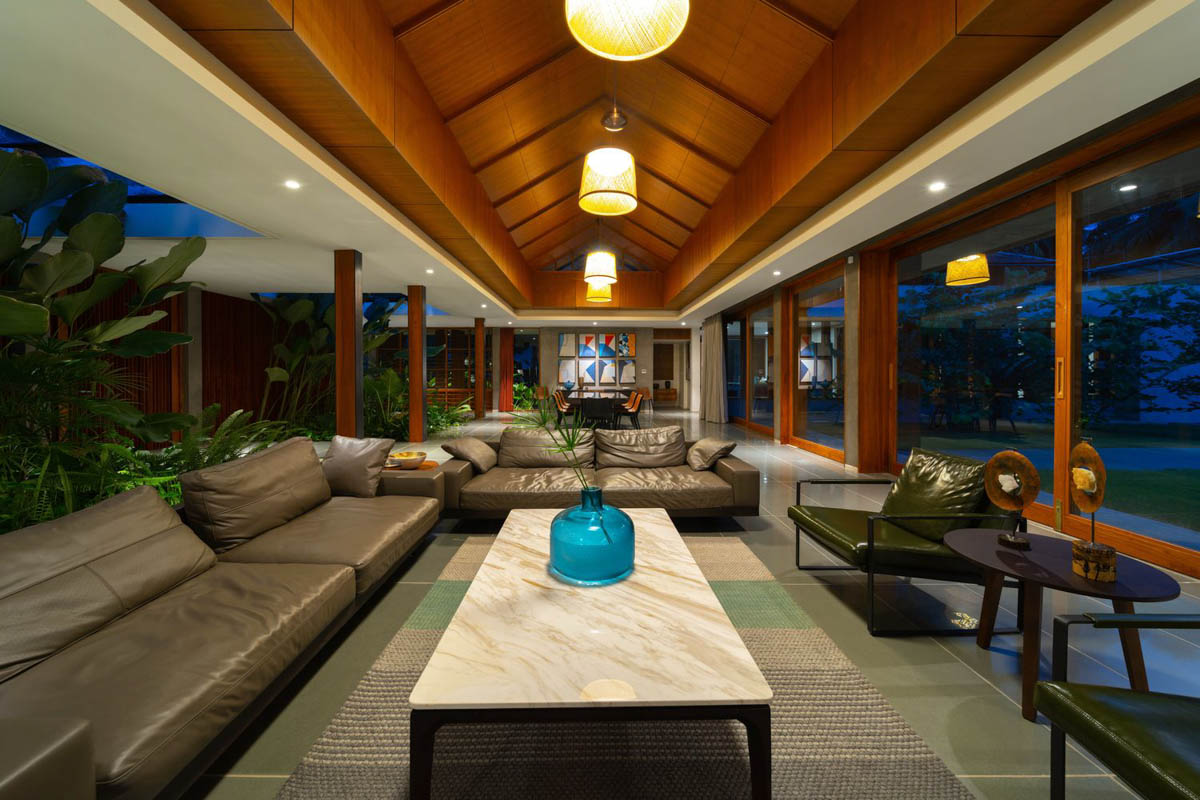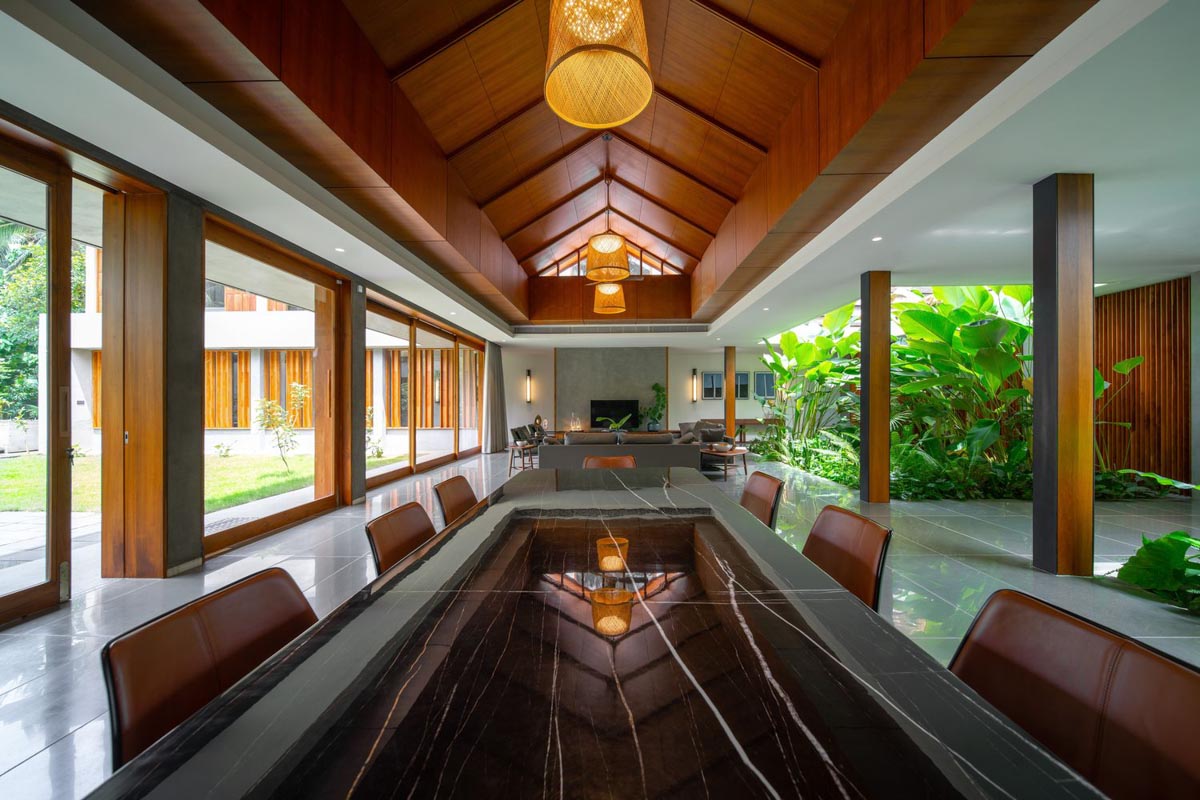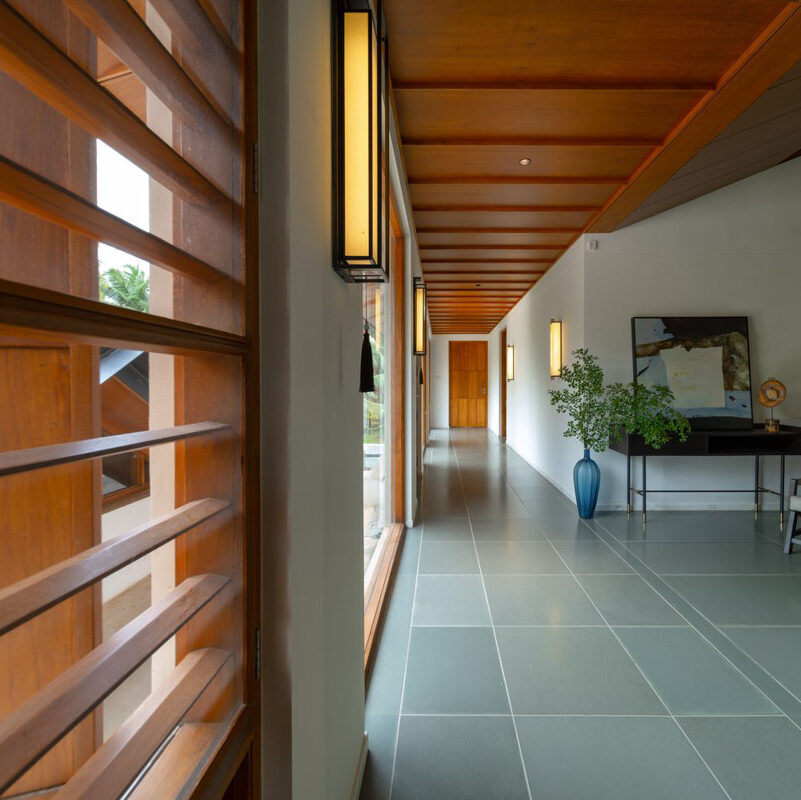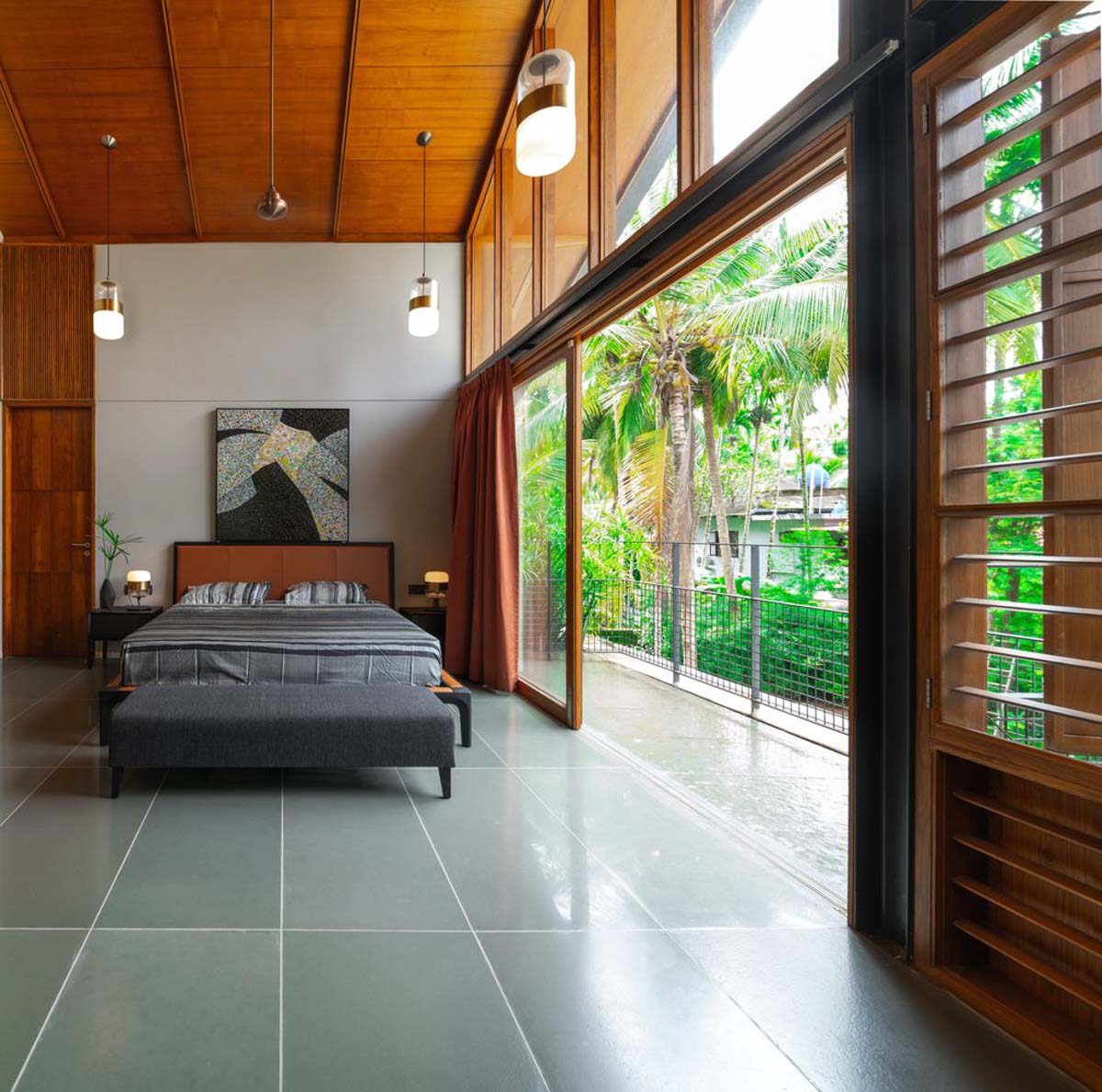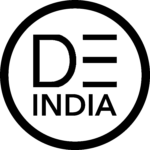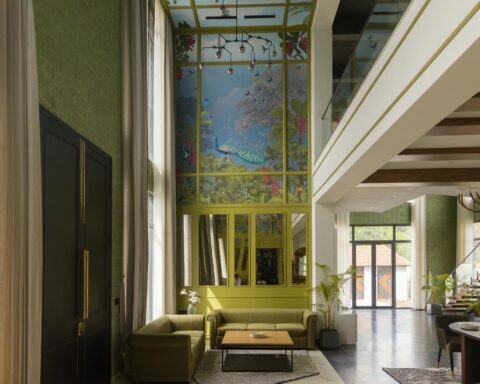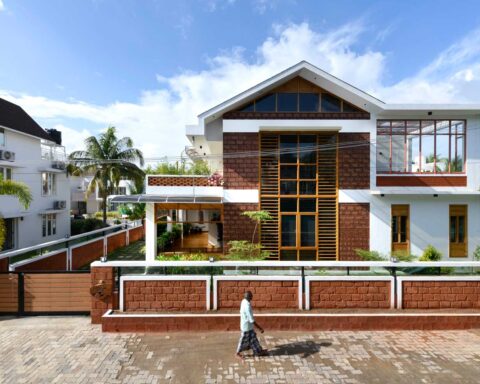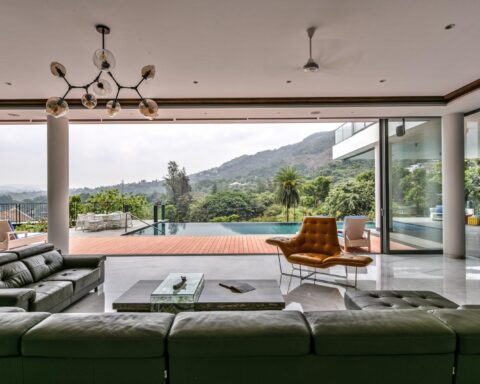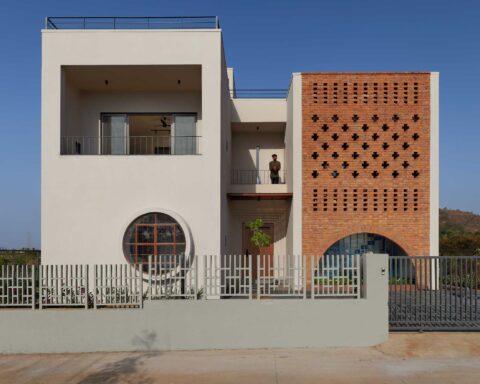Intended to feature biophilic design, this house’s distinctive form echoes the traditional Malabar style architecture.
Project Name : Overture House
Project Location : Payyoli, Kerala, India
Project size : 10,000 sq. ft.
Architects/Designer : Thought Parallels
Project Status : Built
Photographer: Ashik Aseem.
text description by the architects.
The 10000 sq. ft. family home of the Ayanis is located in the leafy surrounds of Payyoli, Kerala – a state with unique culture and traditions, coupled with its varied topology. Mr. Ayani recently decided to branch off from the city to his native village where he could live close to his family and relatives. He believes that this home will be a part of their extended family environment. The family desired the expression of architects who could read the surrounding landscape and acknowledge the splendour of its essence. Their appreciation of the design process and the realisation of the demands of the place made achievable dialogue between client and architects.
Intended to feature biophilic design, the house’s distinctive form echoes the traditional Malabar style architecture. It is partly inspired by the ‘tharavadu’ (traditional houses) of Kerala, a repository of the Indian culture. Westerly breezes are directed over the facade, creating a calm, protected zone on its leeward-side. The house’s primary form is created by a series of mild-steel frames in a bold expression of structure. Principals Shabna and Nikhil aim to integrate the environment to create graceful, life-enhancing spaces. They constantly draw on the littoral lifestyle, referencing the ancestral architecture, while creating a serene, coastal feel.
The stylistic analysis of the context is inspired by the classicism of casual modernism. From outside, the house has a peaceful quality; simple white walls with effortless openings. In many ways, it’s like a person. Though deceivingly modest from the street view, the inside is colossal as a result of the way the design builds into the lush green landscape. The appearance of the house is adorned by details such as the courtyards, the segregation of the social and private spaces and the volumetric play of the interior ceilings. This gives integrity and individuality to each space. The programmatic allocation is simple, it consists of five bedrooms, a kitchen, a formal living-dining space, a family living-dining space and a covered parking. All this is unified in a single volume with the two courtyards that mark the difference between the social and private spaces, which are distributed through a central corridor.
Each introverted space is visually connected to the opulent exteriors, an approach to benefit health and well-being. “We want to nurture a family here. The kids should be able to play and the house should be welcoming for company..” The Ayanis are very particular about the division of social and family spaces. To cater to this need, willfully the social space has been positioned away from the family area. On entering the house, the main corridor provides an immediate view through to the two smaller courtyards. Hardwood screens have been installed to visually connect the indoors with the outdoors. Further, the design solution focused on the interaction of the family living-dining area with the large courtyard. The limits between interior and exterior spaces are diluted.
Nature is summoned into the house which becomes greener towards the large courtyard. In terms of materiality, the house exhibits elements that integrate it into the imagery of the location, recalling the traditional houses with variables that provide a modern touch without radically breaking with the aesthetics sought by the client. The interior work is mainly explored in search of a meaningful integration of shape, colour, texture, and design, the entire space integrates the different planes and volumes. The overlay of Indian Teak Wood in contrast with the Kota Stone creates a juxtaposition of subtle textures from the ceiling to the walls and floor, visually softens the project as a minimalist lavish residential space.
This along with a seemingly delicate steel structure, synergistically connects with the coastal environment to create a calm and concordant composition. The residence also includes a variety of renewable energy methods to curb energy consumption. A solar panel system has been incorporated to delve into the idea of sustainability. The landscape design preserves existing native species, aiding both the reduction of water use for irrigation and lowering temperatures with the surrounding vegetation. The ultimate goal is to create luminous living spaces with natural ventilation while simultaneously exploring the possibility of using renewable energy. An aspiration to achieve enduring spaces.
Photographer: Ashik Aseem.
PROJECT CREDITS
Architecture: Thought Parallels.
Design Team: Nikhil Mohan, Shabna Nikhil, Akshay, Jithin, Najeera, Aparna, Jinesh, Faazil
Clients: Mehaboob Ayani
Engineering & Construction: Hascon construction


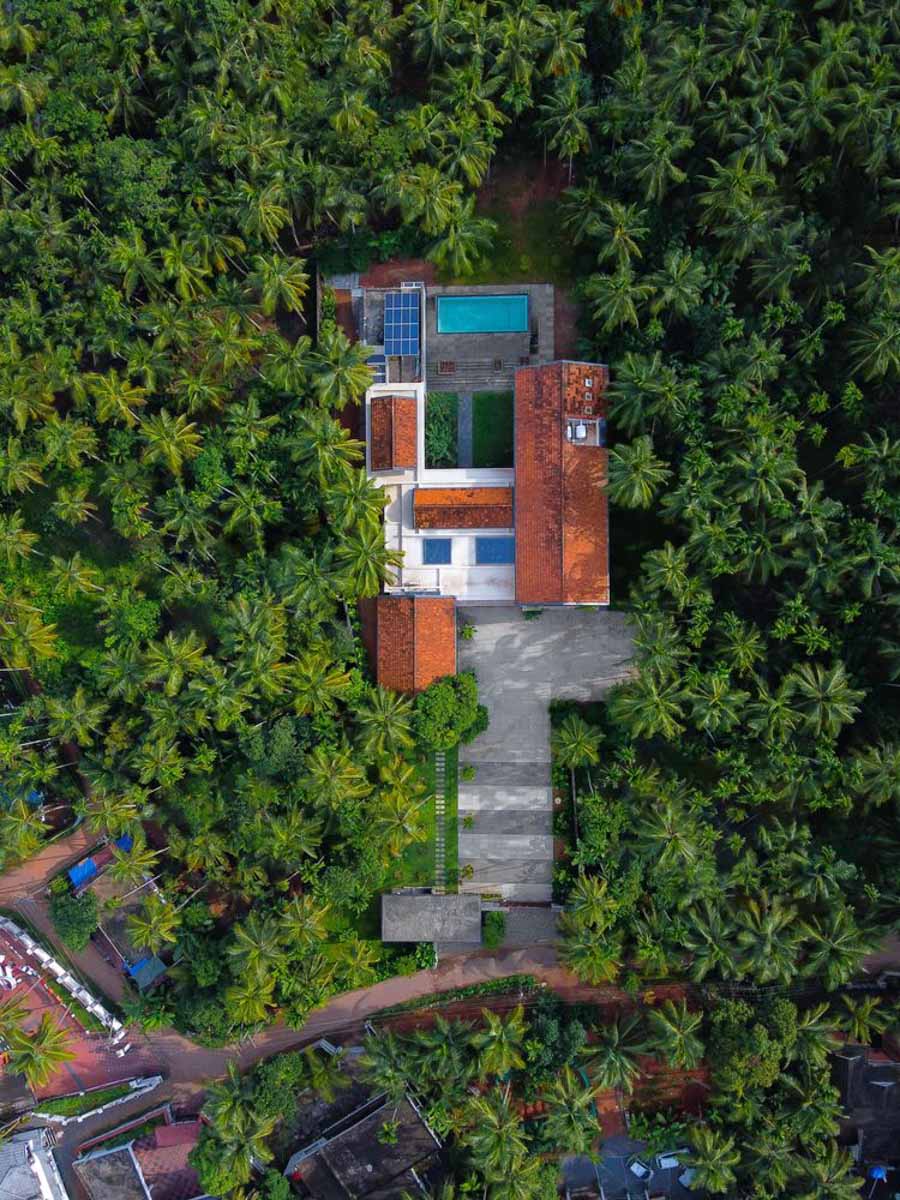
DCIM100MEDIADJI_0291.JPG 
DCIM100MEDIADJI_0291.JPG 